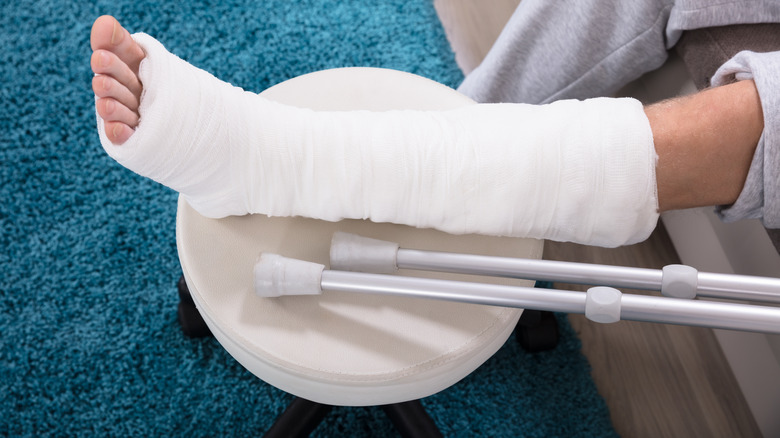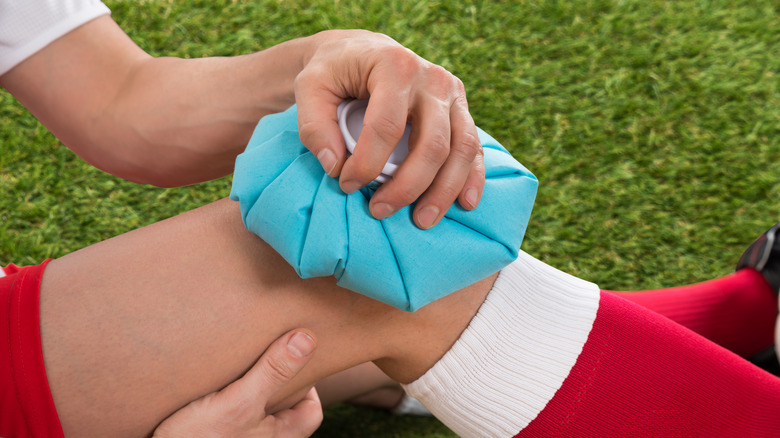The Real Reason You're Supposed To Elevate Your Injuries
If you've ever played sports and sustained a minor injury, you may have been told that you should elevate the affected area of the body. While this treatment may seem vague or unimportant, it's actually crucial to the healing process (via Rehab Access). Elevating a minor injury, especially a sports injury, above the level of your heart can help reduce swelling and pain.
As part of the body's natural inflammatory response, swelling is the result of a buildup of fluid. Elevating your injured arm or leg above your heart can drain the liquid away from the area and help alleviate any pain associated with the swelling. Doing so can help speed up the healing process and it's fairly easy to do! For instance, if you injure your ankle while playing soccer, all you need to do is simply prop up your leg using a pillow or two while sitting on your bed or couch.
The RICE method
Elevation is just one of the four steps of what's known as the RICE method: rest, ice, compression, and elevation. The RICE method is a doctor recommended technique used to self-treat minor injuries (via Healthline). Alongside elevation, one of the best ways to let your injury fully heal is to simply let it. Resting or immobilizing your injury gives it time to mend, and doing so will help prevent any further injury from occurring.
Icing within the first two days of having injured yourself is also an effective way to help your body heal. You can do this by applying ice or an ice pack to your injury for 20 minutes at a time. This will help reduce pain and swelling by numbing and reducing blood flow to the affected area. Compression can also help decrease swelling. Firmly wrapping the injured area with a bandage can provide support and prevent fluid buildup. The bandage shouldn't be too tight, however. If the bandaged area starts to tingle or feel numb, you should loosen the bandage immediately.


